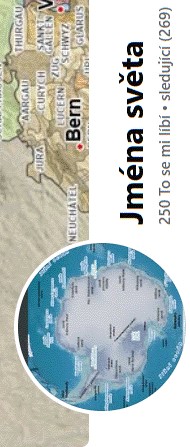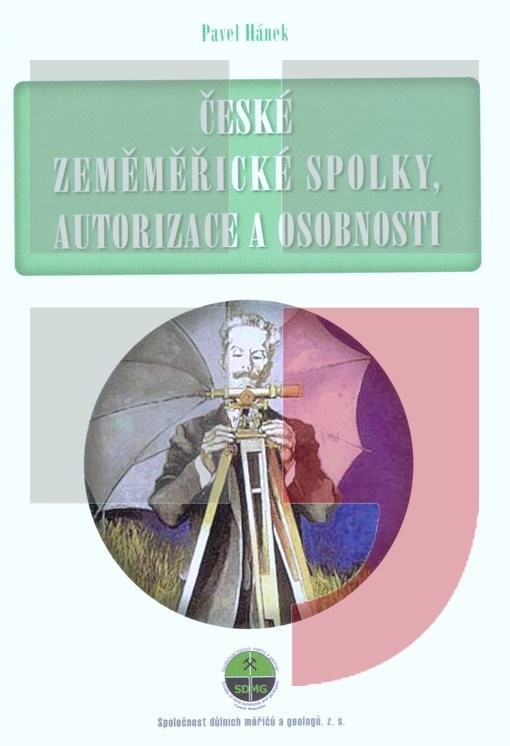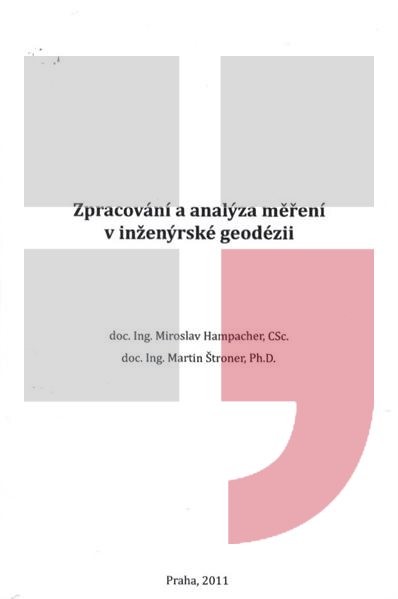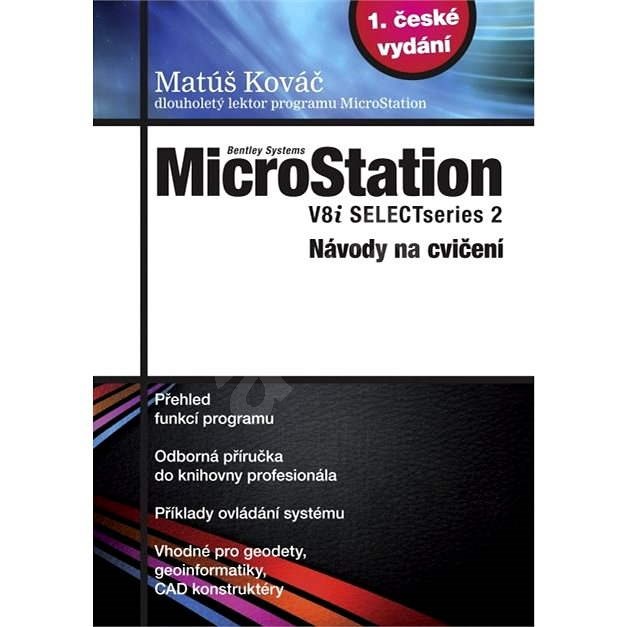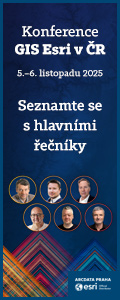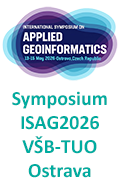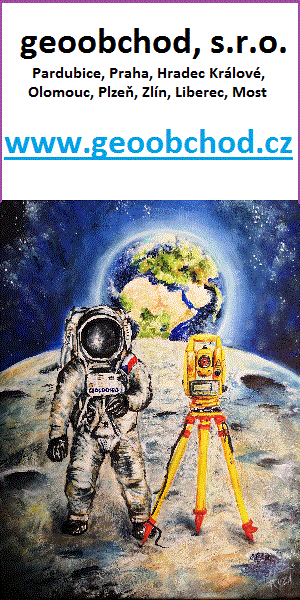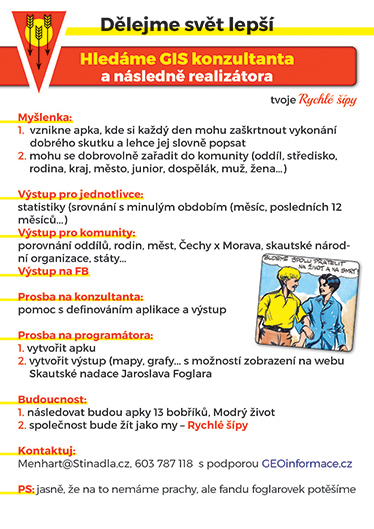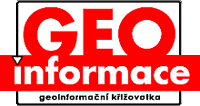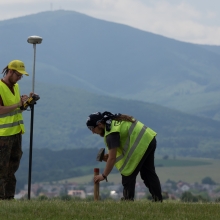zprávy
zdroje zpráv:Pozvánka na konferenci GIS Esri v ČR 2016
14.10.2016 9:45 CEDA Maps a.s. Praha, 14. října 2016 – Společnost CEDA vás tradičně zve na konferenci GIS Esri v ČR.Oznámení o vyhlášení výběrového řízení na služební místo odborný rada odboru ekonomického, oddělení správy pohledávek
14.10.2016 0:00 Státní pozemkový úřad Ústřední ředitelka Státního pozemkového úřadu, jako služební orgán příslušný podle § 10 odst. 1 písm. f) zákona č. 234/2014 Sb., o státní službě (dále jen „zákon“), vyhlašuje výběrové řízení.Earth from Space
13.10.2016 14:25 ESA Observing the Earth
Join us Friday, 14 October, at 10:00 CEST for the ‘Earth from Space’ video programme. Discover Iceland’s Vatnajökull glacier in this week’s edition
22. ročník Setkání je za námi
13.10.2016 12:56 GEPRODěkujeme Vám všem, kteří jste si našli čas a strávili společně s námi 11.… >>
Vývojáři tvořili nad otevřenými daty Prahy
13.10.2016 12:38 Geoportál PrahaO víkendu 30.9. - 2.10. proběhl druhý ročník pražského hackaton Prague Hacks.
Odvolání výuky KGG/BYT ve čtvrtek 13. 10. 2016
13.10.2016 12:10 Katedra geografie UP Olomouc Ve čtvrtek 13. října 2016 neproběhne výuka předmětu KGG/BYT Geografie bydlení (dr. Šimáček). O náhradě budou studenti informováni prostřednictvím e-learningové podpory předmětu.Plzeňský kraj uzavřel smlouvu
13.10.2016 12:00 Plzeňský kraj Plzeňský kraj uzavřel smlouvu se společností Hrdlička spol. s r. o. a podpořil nasazení služby e-UtilityReport, která umožňuje hromadné vytvoření žádostí o vyjádření k existenci inženýrských sítí. Všem dotčeným správcům inženýrských sítí systém vygeneruje žádost a vybraným správcům rovnou elektronicky odešle. Žádosti jsou v souladu s platnou legislativou a obsahují veškeré informace potřebné pro vystavení vyjádření správce. Služba bude k dispozici koncem roku.Plzeňský kraj uzavřel smlouvu
13.10.2016 12:00 Plzeňský kraj Plzeňský kraj uzavřel smlouvu se společností Hrdlička spol. s r. o. a podpořil nasazení služby e-UtilityReport (http://cz.mawis.eu/sluzby/e-utilityreport/), která umožňuje hromadné vytvoření žádostí o vyjádření k existenci inženýrských sítí. Všem dotčeným správcům inženýrských sítí systém vygeneruje žádost a vybraným správcům rovnou elektronicky odešle. Žádosti jsou v souladu s platnou legislativou a obsahují veškeré informace potřebné pro vystavení vyjádření správce. Služba bude k dispozici koncem roku.Hýčkejte svou alma mater
13.10.2016 11:51 Katedra geografie UP Olomouc Jako každý rok i letos byla vypsána soutěž Hýčkejte svou alma mater. Máte-li nápad týkající se popularizace oboru, zviditelnění fakulty na veřejnosti, vylepšení prostředí na fakultě, vytvoření učební pomůcky, uspořádání výstavy fotografií, konkrétní spolupráce se středoškolskými studenty apod., pak požádejte o fakultní podporu! Nápad může být i přiměřeně šílený. Návrhy na své projekty můžete podávat do 31. října 2016, více informací naleznete ZDE.Realizované projekty (nejen) geografů z minulých let můžete shlédnout ZDE. V případě jakýchkoliv dotazů kontaktujte buď dr. Šimáčka nebo přímo pořadatele soutěže.
KGG/BYT dne 13. října odpadá
13.10.2016 11:50 Katedra geografie UP Olomouc Ve čtvrtek 13. října 2016 neproběhne výuka předmětu KGG/BYT Geografie bydlení (dr. Šimáček). O náhradě budou studenti informováni prostřednictvím e-learningové podpory předmětu.KGG/BYT dne 13. října odpadá
13.10.2016 11:36 Katedra geografie UP Olomouc Ve čtvrtek 13. října 2016 odpadá výuka předmětu KGG/BYT. O náhradě budou studenti informováni prostřednictvím e-learningové podpory předmětu.20161013 Rada/odborný rada – informatik
13.10.2016 11:04 ČÚZK - předpisy a opatření Na úřední elektronické desce Katastrálního úřadu pro Středočeský kraj, v sekci "Oznámení a jiná úřední sdělení" bylo vystaveno "Oznámení o vyhlášení výběrového řízení na služební místo rada/odborný rada – informatik pro Katastrální pracoviště Praha-západ"20161013 Rada/odborný rada – informatik
13.10.2016 11:04 ČÚZK /Urady/Katastralni-urady/Katastralni-urady/Katastralni-urad-pro-Stredocesky-kraj/Katastralni-pracoviste/KP-Praha-zapad/O-uradu/Aktuality/20161013-Rada-odborny-rada-–-informatik20161013Rada/odborný rada oddělení právních vztahů k nemovitostem
13.10.2016 11:00 ČÚZK - předpisy a opatření Na úřední elektronické desce Katastrálního úřadu pro Středočeský kraj, v sekci "Oznámení a jiná úřední sdělení" bylo vystaveno "Oznámení o vyhlášení výběrového řízení na služební místo rada/odborný rada oddělení právních vztahů k nemovitostem pro Katastrální pracoviště Rakovník"20161108_Rada/odborný rada oddělení právních vztahů k nemovitostem
13.10.2016 11:00 ČÚZK - předpisy a opatření Na úřední elektronické desce Katastrálního úřadu pro Středočeský kraj, v sekci "Oznámení a jiná úřední sdělení" bylo vystaveno "Oznámení o vyhlášení výběrového řízení na služební místo rada/odborný rada oddělení právních vztahů k nemovitostem pro Katastrální pracoviště Rakovník"20161108_Rada/odborný rada oddělení právních vztahů k nemovitostem
13.10.2016 11:00 ČÚZK /Urady/Katastralni-urady/Katastralni-urady/Katastralni-urad-pro-Stredocesky-kraj/Katastralni-pracoviste/KP-Rakovnik/O-uradu/Aktuality/20161013Rada-odborny-rada-oddeleni-pravnich-vztahu20161013Rada/odborný rada oddělení právních vztahů k nemovitostem
13.10.2016 11:00 ČÚZK /Urady/Katastralni-urady/Katastralni-urady/Katastralni-urad-pro-Stredocesky-kraj/Katastralni-pracoviste/KP-Rakovnik/O-uradu/Aktuality/20161013Rada-odborny-rada-oddeleni-pravnich-vztahu20161104-odborný referent odboru obnovy katastrálního operátu Technické sekce
13.10.2016 10:56 ČÚZK /Urady/Katastralni-urady/Katastralni-urady/Katastralni-urad-pro-Stredocesky-kraj/O-uradu/Aktuality/2016101320161013
13.10.2016 10:56 ČÚZK /Urady/Katastralni-urady/Katastralni-urady/Katastralni-urad-pro-Stredocesky-kraj/O-uradu/Aktuality/2016101320161104-odborný referent odboru obnovy katastrálního operátu Technické sekce
13.10.2016 10:56 ČÚZK - předpisy a opatření V části "Úřední deska", v sekci "Oznámení a jiná úřední sdělení" bylo vystaveno "Oznámení o vyhlášení výběrového řízení na služební místo Odborný referent odboru obnovy katastrálního operátu Technické sekce"20161013
13.10.2016 10:56 ČÚZK - předpisy a opatření V části "Úřední deska", v sekci "Oznámení a jiná úřední sdělení" bylo vystaveno "Oznámení o vyhlášení výběrového řízení na služební místo Odborný referent odboru obnovy katastrálního operátu Technické sekce"20161013Rada/odborný rada – informatik
13.10.2016 10:53 ČÚZK /Urady/Katastralni-urady/Katastralni-urady/Katastralni-urad-pro-Stredocesky-kraj/O-uradu/Aktuality/20161013Rada-odborny-rada-–-informatik20161013Rada/odborný rada – informatik
13.10.2016 10:53 ČÚZK - předpisy a opatření V části "Úřední deska", v sekci "Oznámení a jiná úřední sdělení" bylo vystaveno "Oznámení o vyhlášení výběrového řízení na služební místo Rada/odborný rada – informatik pro Katastrální pracoviště Praha-západ"20161013Rada/odborný rada oddělení právních vztahů k nemovitostem - Rakovník
13.10.2016 10:49 ČÚZK /Urady/Katastralni-urady/Katastralni-urady/Katastralni-urad-pro-Stredocesky-kraj/O-uradu/Aktuality/20161013Rada-odborny-rada-oddeleni-pravnich-vztahu20161109_Rada/odborný rada oddělení právních vztahů k nemovitostem - Rakovník
13.10.2016 10:49 ČÚZK - předpisy a opatření V části "Úřední deska", v sekci "Oznámení a jiná úřední sdělení" bylo vystaveno "Oznámení o vyhlášení výběrového řízení na služební místo rada/odborný rada oddělení právních vztahů k nemovitostem pro Katastrální pracoviště Rakovník"20161013Rada/odborný rada oddělení právních vztahů k nemovitostem - Rakovník
13.10.2016 10:49 ČÚZK - předpisy a opatření V části "Úřední deska", v sekci "Oznámení a jiná úřední sdělení" bylo vystaveno "Oznámení o vyhlášení výběrového řízení na služební místo rada/odborný rada oddělení právních vztahů k nemovitostem pro Katastrální pracoviště Rakovník"20161109_Rada/odborný rada oddělení právních vztahů k nemovitostem - Rakovník
13.10.2016 10:49 ČÚZK /Urady/Katastralni-urady/Katastralni-urady/Katastralni-urad-pro-Stredocesky-kraj/O-uradu/Aktuality/20161013Rada-odborny-rada-oddeleni-pravnich-vztahuOdborný referent odboru obnovy katastrálního operátu
13.10.2016 10:42 ČÚZK - volná místa Katastrální úřad pro Středočeský kraj, vypisuje výběrové řízení na místo Odborný referent odboru obnovy katastrálního operátuOdborný referent odboru obnovy katastrálního operátu
13.10.2016 10:42 ČÚZK - předpisy a opatření Katastrální úřad pro Středočeský krajvypisuje výběrové řízení na místo
Odborný referent odboru obnovy katastrálního operátu
Odborný referent odboru obnovy katastrálního operátu
13.10.2016 10:42 ČÚZK /Urady/Katastralni-urady/Katastralni-urady/Katastralni-urad-pro-Stredocesky-kraj/Uredni-deska/Oznameni-a-jina-uredni-sdeleni/Volna-mista/Odborny-referent-odboru-obnovy-katastralniho-o-(2)Rada/odborný rada oddělení právních vztahů k nemovitostem (2)
13.10.2016 10:39 ČÚZK /Urady/Katastralni-urady/Katastralni-urady/Katastralni-urad-pro-Stredocesky-kraj/Uredni-deska/Oznameni-a-jina-uredni-sdeleni/Volna-mista/Rada-odborny-rada-oddeleni-pravnich-vztahu-k-n-(3)Rada/odborný rada oddělení právních vztahů k nemovitostem (2)
13.10.2016 10:39 ČÚZK - předpisy a opatření Katastrální úřad pro Středočeský kraj Katastrální pracoviště Rakovníkvypisuje výběrové řízení na místo Rada/odborný rada oddělení právních vztahů k nemovitostem
Rada/odborný rada oddělení právních vztahů k nemovitostem
Rada/odborný rada oddělení právních vztahů k nemovitostem (2)
13.10.2016 10:39 ČÚZK - volná místa Katastrální úřad pro Středočeský kraj, Katastrální pracoviště Rakovník vypisuje výběrové řízení na místo Rada/odborný rada oddělení právních vztahů k nemovitostem (2)Rada/odborný rada oddělení právních vztahů k nemovitostem
13.10.2016 10:39 ČÚZK - předpisy a opatření Katastrální úřad pro Středočeský kraj Katastrální pracoviště Rakovníkvypisuje výběrové řízení na místo Rada/odborný rada oddělení právních vztahů k nemovitostem
Rada/odborný rada oddělení právních vztahů k nemovitostem
Rada/odborný rada oddělení právních vztahů k nemovitostem
13.10.2016 10:39 ČÚZK - volná místa Katastrální úřad pro Středočeský kraj, Katastrální pracoviště Rakovník vypisuje výběrové řízení na místo Rada/odborný rada oddělení právních vztahů k nemovitostemRada/odborný rada oddělení právních vztahů k nemovitostem
13.10.2016 10:39 ČÚZK /Urady/Katastralni-urady/Katastralni-urady/Katastralni-urad-pro-Stredocesky-kraj/Uredni-deska/Oznameni-a-jina-uredni-sdeleni/Volna-mista/Rada-odborny-rada-oddeleni-pravnich-vztahu-k-n-(3)Rada/odborný rada – informatik
13.10.2016 10:35 ČÚZK - volná místa Katastrální úřad pro Středočeský kraj, Katastrální pracoviště Praha-západ vypisuje výběrové řízení na místo Rada/odborný rada – informatikRada/odborný rada – informatik
13.10.2016 10:35 ČÚZK - předpisy a opatření Katastrální úřad pro Středočeský kraj Katastrální pracoviště Praha-západvypisuje výběrové řízení na místo Rada/odborný rada – informatik
Rada/odborný rada – informatik
Rada/odborný rada – informatik
13.10.2016 10:35 ČÚZK /Urady/Katastralni-urady/Katastralni-urady/Katastralni-urad-pro-Stredocesky-kraj/Uredni-deska/Oznameni-a-jina-uredni-sdeleni/Volna-mista/Rada-odborny-rada-–-informatikGeomatika v projektech očima účastníka
13.10.2016 8:23 GISportal.cz Ve dnech 5. a 6. října 2016 se v prostorách jízdárny zámku Kozel konala tradiční konference Geomatika v projektech, letos netradičně spojená s konferencemi Information Systems for Agriculture and Forestry (ISAF) a PLAN4ALL. O organizaci se postarala Katedra ...odborný referent v právním oddělení (1)
13.10.2016 7:46 ČÚZK /Urady/Katastralni-urady/Katastralni-urady/Katastralni-urad-pro-Jihomoravsky-kraj/Uredni-deska/Oznameni-a-jina-uredni-sdeleni/Volna-mista/odborny-referent-v-pravnim-oddeleni-(1)odborný referent v právním oddělení
13.10.2016 7:46 ČÚZK - volná místa Katastrální úřad pro Jihomoravský kraj, Katastrální pracoviště Brno-venkov vypisuje výběrové řízení na místo odborný referent v právním odděleníodborný referent v právním oddělení
13.10.2016 7:46 ČÚZK /Urady/Katastralni-urady/Katastralni-urady/Katastralni-urad-pro-Jihomoravsky-kraj/Uredni-deska/Oznameni-a-jina-uredni-sdeleni/Volna-mista/odborny-referent-v-pravnim-oddeleni-(1)odborný referent v právním oddělení
13.10.2016 7:46 ČÚZK - předpisy a opatření Katastrální úřad pro Jihomoravský kraj Katastrální pracoviště Brno-venkovnabízí služební místo
odborný referent v právním oddělení
odborný referent v právním oddělení (1)
13.10.2016 7:46 ČÚZK - předpisy a opatření Katastrální úřad pro Jihomoravský kraj Katastrální pracoviště Brno-venkovnabízí služební místo
odborný referent v právním oddělení
odborný referent v právním oddělení (1)
13.10.2016 7:46 ČÚZK - volná místa Katastrální úřad pro Jihomoravský kraj, Katastrální pracoviště Brno-venkov vypisuje výběrové řízení na místo odborný referent v právním oddělení (1)Co očekávat od kamery modulu Schiaparelli?
13.10.2016 6:45 Český Kosmický PortálKdyž bude přistávací modul Schiaparelli mise ExoMars sestupovat 19. října k Marsu, pořídí celkem patnáct snímků přibližujícího se povrchu. Vědci nyní nasimulovali pohled, který z palubní kamery můžeme očekávat.
Co očekávat od kamery modulu Schiaparelli?
13.10.2016 6:45 Český Kosmický PortálKdyž bude přistávací modul Schiaparelli mise ExoMars sestupovat 19. října k Marsu, pořídí celkem patnáct snímků přibližujícího se povrchu. Vědci nyní nasimulovali pohled, který z palubní kamery můžeme očekávat.
URBIS Grey Layer 2012 Ostrava
13.10.2016 2:00 Cenia - Katalog metadat ČR - INSPIRE Polygon dataset containing previously developed sites/land (for e.g. industrial sites, military use, commercial places or infrastructural areas) that are now vacant or unused. Each polygon bears characteristics like constructions on site, degree of soil sealing and connection to transportation infrastructure.Národní konference VENKOV 2016 v Litoměřicích
13.10.2016 0:00 Státní pozemkový úřad Pořádá Spolek pro obnovu venkova ČR - partner Státního pozemkového úřaduPoslední zkoušky Thomase Pesqueta před startem do vesmíru
12.10.2016 15:25 Český Kosmický PortálUž jen týdny zbývají do startu, který je plánován na časné ráno 16. listopadu letošního roku. Před kosmonauty Thomasem Pesquetem (ESA), Peggy Whitsonovou (NASA) a Olegem Novickým (Roskosmos) jsou nyní závěrečné zkoušky.
Poslední zkoušky Thomase Pesqueta před startem do vesmíru
12.10.2016 15:25 Český Kosmický PortálUž jen týdny zbývají do startu, který je plánován na časné ráno 16. listopadu letošního roku. Před kosmonauty Thomasem Pesquetem (ESA), Peggy Whitsonovou (NASA) a Olegem Novickým (Roskosmos) jsou nyní závěrečné zkoušky.
rada/odborný rada v oddělení právních vztahů k nemovitostem (1)
12.10.2016 14:18 ČÚZK - volná místa Katastrální úřad pro Jihomoravský kraj, Katastrální pracoviště Znojmo vypisuje výběrové řízení na místo rada/odborný rada v oddělení právních vztahů k nemovitostem (1)rada/odborný rada v oddělení právních vztahů k nemovitostem (1)
12.10.2016 14:18 ČÚZK /Urady/Katastralni-urady/Katastralni-urady/Katastralni-urad-pro-Jihomoravsky-kraj/Uredni-deska/Oznameni-a-jina-uredni-sdeleni/Volna-mista/rada-odborny-rada-v-oddeleni-pravnich-vztahu-k-(2)rada/odborný rada v oddělení právních vztahů k nemovitostem (1)
12.10.2016 14:18 ČÚZK - předpisy a opatření Katastrální úřad pro Jihomoravský kraj Katastrální pracoviště Znojmovypisuje výběrové řízení na místo
rada/odborný rada v oddělení právních vztahů k nemovitostem
vrchní referent/rada v oddělení obnovy katastrální operátu a revize KN
12.10.2016 14:16 ČÚZK - předpisy a opatření Katastrální úřad pro Jihomoravský kraj Katastrální pracoviště Brno-venkovvypisuje výběrové řízení na místo
vrchní referent/rada v oddělení obnovy katastrální operátu a revize KN
vrchní referent/rada v oddělení obnovy katastrální operátu a revize KN
12.10.2016 14:16 ČÚZK /Urady/Katastralni-urady/Katastralni-urady/Katastralni-urad-pro-Jihomoravsky-kraj/Uredni-deska/Oznameni-a-jina-uredni-sdeleni/Volna-mista/vrchni-referent-rada-v-oddeleni-obnovy-katastralnivrchní referent/rada v oddělení obnovy katastrální operátu a revize KN
12.10.2016 14:16 ČÚZK - volná místa Katastrální úřad pro Jihomoravský kraj, Katastrální pracoviště Brno-venkov vypisuje výběrové řízení na místo vrchní referent/rada v oddělení obnovy katastrální operátu a revize KNodborný rada – vedoucí oddělení obnovy katastrálního operátu č. 2 na Technické sekci
12.10.2016 13:53 ČÚZK - předpisy a opatření Katastrální úřad pro Jihomoravský krajvypisuje výběrové řízení na místo
odborný rada – vedoucí oddělení obnovy katastrálního operátu č. 2 na Technické sekci
odborný rada – vedoucí oddělení obnovy katastrálního operátu č. 2 na Technické sekci
12.10.2016 13:53 ČÚZK /Urady/Katastralni-urady/Katastralni-urady/Katastralni-urad-pro-Jihomoravsky-kraj/Uredni-deska/Oznameni-a-jina-uredni-sdeleni/Volna-mista/odborny-rada-–-vedouci-oddeleni-obnovy-katastr-(6)odborný rada – vedoucí oddělení obnovy katastrálního operátu č. 2 na Technické sekci
12.10.2016 13:53 ČÚZK - volná místa Katastrální úřad pro Jihomoravský kraj, vypisuje výběrové řízení na místo odborný rada – vedoucí oddělení obnovy katastrálního operátu č. 2 na Technické sekciodborný rada – vedoucí oddělení obnovy katastrálního operátu č. 1 na Technické sekci
12.10.2016 13:48 ČÚZK /Urady/Katastralni-urady/Katastralni-urady/Katastralni-urad-pro-Jihomoravsky-kraj/Uredni-deska/Oznameni-a-jina-uredni-sdeleni/Volna-mista/odborny-rada-–-vedouci-oddeleni-obnovy-katastr-(5)odborný rada – vedoucí oddělení obnovy katastrálního operátu č. 1 na Technické sekci
12.10.2016 13:48 ČÚZK - volná místa Katastrální úřad pro Jihomoravský kraj, vypisuje výběrové řízení na místo odborný rada – vedoucí oddělení obnovy katastrálního operátu č. 1 na Technické sekciodborný rada – vedoucí oddělení obnovy katastrálního operátu č. 1 na Technické sekci
12.10.2016 13:48 ČÚZK - předpisy a opatření Katastrální úřad pro Jihomoravský krajvypisuje výběrové řízení na místo
odborný rada – vedoucí oddělení obnovy katastrálního operátu č. 1 na Technické sekci
odborný referent/vrchní referent v oddělení aktualizace KN č. 2
12.10.2016 13:39 ČÚZK - předpisy a opatření Katastrální úřad pro Jihomoravský kraj Katastrální pracoviště Znojmovypisuje výběrové řízení na místo
odborný referent/vrchní referent v oddělení aktualizace KN č. 2
odborný referent/vrchní referent v oddělení aktualizace KN č. 2
12.10.2016 13:39 ČÚZK /Urady/Katastralni-urady/Katastralni-urady/Katastralni-urad-pro-Jihomoravsky-kraj/Uredni-deska/Oznameni-a-jina-uredni-sdeleni/Volna-mista/odborny-referent-vrchni-referent-v-oddeleni-ak-(8)odborný referent/vrchní referent v oddělení aktualizace KN č. 2
12.10.2016 13:39 ČÚZK - volná místa Katastrální úřad pro Jihomoravský kraj, Katastrální pracoviště Znojmo vypisuje výběrové řízení na místo odborný referent/vrchní referent v oddělení aktualizace KN č. 2odborný referent v oddělení aktualizace KN č. 2
12.10.2016 13:33 ČÚZK - předpisy a opatření Katastrální úřad pro Jihomoravský kraj Katastrální pracoviště Znojmovypisuje výběrové řízení na místo
odborný referent v oddělení aktualizace KN č. 2
odborný referent v oddělení aktualizace KN č. 2
12.10.2016 13:33 ČÚZK - volná místa Katastrální úřad pro Jihomoravský kraj, Katastrální pracoviště Znojmo vypisuje výběrové řízení na místo odborný referent v oddělení aktualizace KN č. 2odborný referent v oddělení aktualizace KN č. 2
12.10.2016 13:33 ČÚZK /Urady/Katastralni-urady/Katastralni-urady/Katastralni-urad-pro-Jihomoravsky-kraj/Uredni-deska/Oznameni-a-jina-uredni-sdeleni/Volna-mista/odborny-referent-v-oddeleni-aktualizace-KN-c-2V Geoportálu ÚAP Ústeckého kra
12.10.2016 12:00 Ústecký kraj V Geoportálu ÚAP Ústeckého kraje byla provedena aktualizace údajů pro poskytovatele ČEZ Distribuce, a. s. – jev 72, 73, ČEZ ICT Services, a. s. – jev 82The future of GNSS user technology
12.10.2016 9:57 European GNSS Agency
The GSA’s recently released GNSS User Technology Report aims not only to foresee how location will be used in the years to come, but also how it will influence the design of positioning systems. Download your copy today!
Imagine in the not-so-distant future setting your morning alarm based on real-time traffic estimates and having your coffee brewed accordingly, ready and waiting for you as you head out the door.
Always apologising for forgetting to send Mom flowers on Mother’s Day? No worries, soon your phone will send you an automatic reminder and provide your autonomous car with directions to the nearest floral shop. No time to shop? Then just send a drone to deliver the flowers for you.
This isn’t science fiction. In the era of the Internet of Things (IoT) and Big Data, trends in geo-positioning and information technology (IT) are simply inseparable. After all, IoT is built on the premise that it will know where the ‘things’ are. In fact, already today nearly half of all available mobile applications use location information – a significance that will likely only increase. However, according to the GNSS User Technology Report, this will only happen if the positioning systems of the future provide:
- Ubiquitous positioning: the ability to choose the optimal combination of sensors and networks to become environment-independent.
- Automation and ambient intelligence: sufficient reliability to enable such autonomous operations as driving, sailing, parking, landing, etc., by sensing the environment and adapting to it in real time.
- Security: not only in the sense of a solution’s reliability and safety, but also by responding to growing concerns about privacy.
“What this report shows is that no single positioning method or technology – or magic combination thereof – can serve as ‘the answer’,” says GSA Executive Director Carlo des Dorides. “After all, the technology that’s right for pedestrian navigation probably isn’t the best fit for use with an unmanned vehicle.” Des Dorides explains that the reason for this is that all positioning requirements exist within a given context, including the physical and radio-electrical environment, user dynamics and power, size and weight constraints. “It is this context that determines what positioning technologies are required,” he says.
Your guide to the shaping the future
With this ‘future’ and understanding of what is required to reach it in mind, the GNSS User Technology Report aims not only to foresee how location will be used in the years to come, but also how it will influence the design of positioning systems. The need for ubiquitous positioning, automation and ambient intelligence and security are impacting all aspects of receiver design – from antenna frequency range to signal processing channels. Furthermore, the implementation of disruptive techniques, such as vector and cloud processing, is making it possible to achieve greater performances in keeping battery life at acceptable levels. On top of this, other positioning technologies and signals of opportunity are being used alongside GNSS to offer enhanced experiences. For example, sensor technology is advancing in parallel with GNSS technology, making the vision of smart dust – a widely deployed network of low power and low cost microsensors – closer to becoming a reality. GNSS antenna designers are expected to complement this solution with more robust, smaller and multi-purpose antennas.
Many of these innovations are already becoming accessible, as confirmed by the leading GNSS technology providers featured in the Report. But what all this really means – and as the Report makes abundantly clear – the GNSS user equipment landscape is a rapidly evolving one, with a market that is more diversified than ever and where new models are being introduced at an unprecedented rate. With this development being driven by the growing performance requirements of innovative applications and developments in the semiconductor industry, now is the time to take advantage of the enhanced capabilities offered by new and modernised GNSS systems and services. And the GSA’s GNSS User Technology Report is your guide to doing so.
The Report is free and can be downloaded here.
Media note: This feature can be republished without charge provided the European GNSS Agency (GSA) is acknowledged as the source at the top or the bottom of the story. You must request permission before you use any of the photographs on the site. If you republish, we would be grateful if you could link back to the GSA website (http://www.gsa.europa.eu).
účetní Katastrálního úřadu pro Moravskoslezský kraj
12.10.2016 9:56 ČÚZK - předpisy a opatření Katastrální úřad pro Moravskoslezský krajvypisuje výběrové řízení na místo účetní Katastrálního úřadu pro Moravskoslezský kraj
účetní Katastrálního úřadu pro Moravskoslezský kraj
účetní Katastrálního úřadu pro Moravskoslezský kraj
12.10.2016 9:56 ČÚZK - volná místa Katastrální úřad pro Moravskoslezský kraj, vypisuje výběrové řízení na místo účetní Katastrálního úřadu pro Moravskoslezský krajúčetní Katastrálního úřadu pro Moravskoslezský kraj
12.10.2016 9:56 ČÚZK /Urady/Katastralni-urady/Katastralni-urady/Katastralni-urad-pro-Moravskoslezsky-kraj/Volna-mista/ucetni-Katastralniho-uradu-pro-Moravskoslezsky-kraodborný referent – personalista/asistent ředitele Katastrálního úřadu pro Moravskoslezský kraj
12.10.2016 9:49 ČÚZK /Urady/Katastralni-urady/Katastralni-urady/Katastralni-urad-pro-Moravskoslezsky-kraj/Uredni-deska/Oznameni-a-jina-uredni-sdeleni/Volna-mista/odborny-referent-–-personalista-asistent-rediteleodborný referent – personalista/asistent ředitele Katastrálního úřadu pro Moravskoslezský kraj
12.10.2016 9:49 ČÚZK - předpisy a opatření Katastrální úřad pro Moravskoslezský krajvypisuje výběrové řízení na místo odborný referent – personalista/asistent ředitele Katastrálního úř
odborný referent – personalista/asistent ředitele Katastrálního úřadu pro Moravskoslezský kraj
odborný referent – personalista/asistent ředitele Katastrálního úřadu pro Moravskoslezský kraj
12.10.2016 9:49 ČÚZK - volná místa Katastrální úřad pro Moravskoslezský kraj, vypisuje výběrové řízení na místo odborný referent – personalista/asistent ředitele Katastrálního úřadu pro Moravskoslezský krajDalší nové pracovní nabídky, především pro programátory.
12.10.2016 8:47 GISportal.cz Společnost Asseco Central Europe, a.s. hledá celkem 6 programátorů (vždy dva na pozici). Více v našich nabídkách práce (IT Analytik, JavaScript programátor, Java programátor).odborný referent – obnova katastrálního operátu v technickém odboru
12.10.2016 8:06 ČÚZK /Urady/Katastralni-urady/Katastralni-urady/Katastralni-urad-pro-Moravskoslezsky-kraj/Uredni-deska/Oznameni-a-jina-uredni-sdeleni/Volna-mista/odborny-referent-–-obnova-katastralniho-operat-(2)odborný referent – obnova katastrálního operátu v technickém odboru
12.10.2016 8:06 ČÚZK - volná místa Katastrální úřad pro Moravskoslezský kraj, vypisuje výběrové řízení na místo odborný referent – obnova katastrálního operátu v technickém odboruodborný referent – obnova katastrálního operátu v technickém odboru, Katastrálního úřadu pro Moravsk
12.10.2016 8:06 ČÚZK /Urady/Katastralni-urady/Katastralni-urady/Katastralni-urad-pro-Moravskoslezsky-kraj/Uredni-deska/Oznameni-a-jina-uredni-sdeleni/Volna-mista/odborny-referent-–-obnova-katastralniho-operat-(2)odborný referent – obnova katastrálního operátu v technickém odboru, Katastrálního úřadu pro Moravsk
12.10.2016 8:06 ČÚZK - předpisy a opatření Katastrální úřad pro Moravskoslezský krajodborný referent – obnova katastrálního operátu v technickém odboru, Katastrálního úřadu pro MS kraj
odborný referent – obnova katastrálního operátu v technickém odboru, Katastrálního úřadu pro Moravskoslezský kraj
odborný referent – obnova katastrálního operátu v technickém odboru
12.10.2016 8:06 ČÚZK - předpisy a opatření Katastrální úřad pro Moravskoslezský krajvypisuje výběrové řízení na místo odborný referent – obnova katastrálního operátu v technickém odbor
odborný referent – obnova katastrálního operátu v technickém odboru
odborný referent – obnova katastrálního operátu v technickém odboru, Katastrálního úřadu pro Moravsk
12.10.2016 8:06 ČÚZK - volná místa Katastrální úřad pro Moravskoslezský kraj, vypisuje výběrové řízení na místo odborný referent – obnova katastrálního operátu v technickém odboru, Katastrálního úřadu pro Moravskodborný referent - návrh zápisu v katastru Katastrálního pracoviště Ostrava, Katastrálního úřadu pro
12.10.2016 8:05 ČÚZK - předpisy a opatření Katastrální úřad pro Moravskoslezský kraj Katastrální pracoviště Ostravavypisuje výběrové řízení na místo odborný referent - návrh zápisu v katastru Katastrálního pracovišt
odborný referent - návrh zápisu v katastru Katastrálního pracoviště Ostrava, Katastrálního úřadu pro Moravskoslezský kraj
odborný referent - návrh zápisu v katastru Katastrálního pracoviště Ostrava, Katastrálního úřadu pro
12.10.2016 8:05 ČÚZK - volná místa Katastrální úřad pro Moravskoslezský kraj, Katastrální pracoviště Ostrava vypisuje výběrové řízení na místo odborný referent - návrh zápisu v katastru Katastrálního pracoviště Ostrava, Katastrálního úřadu proodborný referent - návrh zápisu v katastru Katastrálního pracoviště Ostrava, Katastrálního úřadu pro
12.10.2016 8:05 ČÚZK /Urady/Katastralni-urady/Katastralni-urady/Katastralni-urad-pro-Moravskoslezsky-kraj/Uredni-deska/Oznameni-a-jina-uredni-sdeleni/Volna-mista/odborny-referent-navrh-zapisu-v-katastru-Katas-(1)odborný referent - návrh zápisu v katastru Katastrálního pracoviště Opava, Katastrálního úřadu pro M
12.10.2016 8:04 ČÚZK /Urady/Katastralni-urady/Katastralni-urady/Katastralni-urad-pro-Moravskoslezsky-kraj/Uredni-deska/Oznameni-a-jina-uredni-sdeleni/Volna-mista/odborny-referent-navrh-zapisu-v-katastru-Katastralodborný referent - návrh zápisu v katastru Katastrálního pracoviště Opava, Katastrálního úřadu pro M
12.10.2016 8:04 ČÚZK - volná místa Katastrální úřad pro Moravskoslezský kraj, Katastrální pracoviště Opava vypisuje výběrové řízení na místo odborný referent - návrh zápisu v katastru Katastrálního pracoviště Opava, Katastrálního úřadu pro Modborný referent - návrh zápisu v katastru Katastrálního pracoviště Opava, Katastrálního úřadu pro M
12.10.2016 8:04 ČÚZK - předpisy a opatření Katastrální úřad pro Moravskoslezský kraj Katastrální pracoviště Opavavypisuje výběrové řízení na místo odborný referent - návrh zápisu v katastru Katastrálního pracovišt
odborný referent - návrh zápisu v katastru Katastrálního pracoviště Opava, Katastrálního úřadu pro Moravskoslezský kraj
vrchní referent/rada – kontrola aktualizace Katastrálního pracoviště Opava, Katastrálního úřadu pro
12.10.2016 8:02 ČÚZK /Urady/Katastralni-urady/Katastralni-urady/Katastralni-urad-pro-Moravskoslezsky-kraj/Uredni-deska/Oznameni-a-jina-uredni-sdeleni/Volna-mista/vrchni-referent-rada-–-kontrola-aktualizace-Katastvrchní referent/rada – kontrola aktualizace Katastrálního pracoviště Opava, Katastrálního úřadu pro
12.10.2016 8:02 ČÚZK - volná místa Katastrální úřad pro Moravskoslezský kraj, Katastrální pracoviště Opava vypisuje výběrové řízení na místo vrchní referent/rada – kontrola aktualizace Katastrálního pracoviště Opava, Katastrálního úřadu provrchní referent/rada – kontrola aktualizace Katastrálního pracoviště Opava, Katastrálního úřadu pro
12.10.2016 8:02 ČÚZK - předpisy a opatření Katastrální úřad pro Moravskoslezský kraj Katastrální pracoviště Opavavypisuje výběrové řízení na místo vrchní referent/rada – kontrola aktualizace Katastrálního pracoviš
vrchní referent/rada – kontrola aktualizace Katastrálního pracoviště Opava, Katastrálního úřadu pro Moravskoslezský kraj
odborný referent – poskytování informací KN Katastrálního pracoviště Karviná, Katastrálního úřadu pr
12.10.2016 8:01 ČÚZK - předpisy a opatření Katastrální úřad pro Moravskoslezský kraj Katastrální pracoviště Karvinávypisuje výběrové řízení na místo odborný referent – poskytování informací KN Katastrálního pracoviš
odborný referent – poskytování informací KN Katastrálního pracoviště Karviná, Katastrálního úřadu pro Moravskoslezský kraj
odborný referent – poskytování informací KN Katastrálního pracoviště Karviná, Katastrálního úřadu pr
12.10.2016 8:01 ČÚZK /Urady/Katastralni-urady/Katastralni-urady/Katastralni-urad-pro-Moravskoslezsky-kraj/Uredni-deska/Oznameni-a-jina-uredni-sdeleni/Volna-mista/odborny-referent-–-poskytovani-informaci-KN-Ka-(1)odborný referent – poskytování informací KN Katastrálního pracoviště Karviná, Katastrálního úřadu pr
12.10.2016 8:01 ČÚZK - volná místa Katastrální úřad pro Moravskoslezský kraj, Katastrální pracoviště Karviná vypisuje výběrové řízení na místo odborný referent – poskytování informací KN Katastrálního pracoviště Karviná, Katastrálního úřadu prNa Silniční konferenci představíme řešení CleveRA a SMARTiC CITY
12.10.2016 2:00 VARS.czDvoudenní Silniční konference je největší odbornou akcí svého druhu v České republice. V pořadí 24. ročník se bude konat na tradičním místě, v královehradeckém kongresovém centru Aldis ve středu a ve čtvrtek 19. a 20. října 2016.
Na Silniční konferenci představíme řešení CleveRA a SMARTiC CITY
12.10.2016 2:00 VARS.czSpolečnost VARS BRNO a.s. zve všechny zájemce 19. a 20. října 2016 do Hradce Králové na Silniční konferenci. Naši odborníci jsou připraveni seznámit vás s výsledky implementací řešení CleveRA a současně s novým produktem SMARTiC CITY.
Na Silniční konferenci představíme řešení CleveRA a SMARTiC CITY
12.10.2016 2:00 VARS.czSpolečnost VARS BRNO a.s. zve všechny zájemce 19. a 20. října 2016 do Hradce Králové na Silniční konferenci. Naši odborníci jsou připraveni seznámit vás s výsledky implementací řešení CleveRA a současně s novým produktem SMARTiC CITY.
Na Silniční konferenci představíme řešení CleveRA a SMARTiC CITY
12.10.2016 2:00 VARS.czDvoudenní Silniční konference je největší odbornou akcí svého druhu v České republice. V pořadí 24. ročník se bude konat na tradičním místě, v královehradeckém kongresovém centru Aldis ve středu a ve čtvrtek 19. a 20. října 2016.
Na Silniční konferenci představíme řešení CleveRA a SMARTiC CITY
12.10.2016 2:00 VARS.czDvoudenní Silniční konference je největší odbornou akcí svého druhu v České republice. V pořadí 24. ročník se bude konat na tradičním místě, v královehradeckém kongresovém centru Aldis ve středu a ve čtvrtek 19. a 20. října 2016.
Nedostupnost webových stránek
12.10.2016 0:00 Státní pozemkový úřad Vážení návštěvníci, z technických důvodů budou dnes po 20.hodině webové stránky nedostupné. Webové stránky budou zprovozněny během večera nejdéle ráno. Děkujeme za pochopení a omlouváme se za komplikacePozemkové úpravy a ochrana pôdy
11.10.2016 22:03 Komora pozemkových úprav SRBohatý hospodár nepredáva svoj majetok. Ochrana vlastníctva pôdy pred jej predajom zahraničným vlastníkom má aj iné možnosti ako reštriktívne zákony.
Správa majetku pod kontrolou
11.10.2016 16:38Ať už půdu pronajímám nebo sám využívám, je velmi důležité mít ve svém vlastnictví pořádek. To je zřejmé. Většina vlastníků půdy samozřejmě ví, co vlastní.
Vzhledem ke změnám v katastru nemovitostí, směnám mezi zemědělci, pozemkovým úpravám, scelování pozemků apod. může docházet k větším či menším nesrovnalostem, na které potom může vlastník pozemků doplatit, v nejhorším případě i ztrátou části pozemků nebo jejich kvality.
Proč je tedy dobré vědět, co PŘESNĚ vlastním?
- Nestane se mi, že vlastním pozemek, aniž bych ho sám využíval nebo ho propachtovával.
- Daňové přiznání bude 100% správně a napoprvé.
- Mnou propachtovaný pozemek nebude obdělávat někdo třetí bez mého vědomí.
- Mám přesný přehled o příjmech a výdajích plynoucích z vlastnictví nemovitosti.
- Mohu srovnávat a případně vhodně prodávat, nakupovat či směňovat.
-
Mám vždy k dispozici a po ruce podklady pro jednání se zemědělci, dalšími vlastníky nebo úřady.
Že je to samozřejmost?
O následcích nedořešených smluvních vztahů jsme již psali zde.
Z našich zkušeností vyplývá, že až 20 % zemědělské půdy mají její vlastníci pronajato nevýhodně, nebo ji dokonce nepronajímají vůbec.
Vytvořit správně daňové přiznání může zabrat spoustu času. Automatizované vytvoření příslušného souboru a zaslání na portál Finanční správy může ušetřit i několik týdnů práce. A pokud se k tomu přidají řádně a systematicky vedené pachtovní smlouvy, může být úspora času ještě větší.
Prvním krokem, který proto našim klientům doporučujeme, je analýza vlastnictví, díky které zjistí, co přesně vlastní a získají tak jistotu.
Více na www.cleverassets.cz
CivilStorm and StormCAD Advance Simulation and Reporting for Stormwater Designers and Managers
11.10.2016 16:08 Bentley SystemsBentley Systems announces the availability of the new CivilStorm and StormCAD CONNECT Edition applications for the analysis and design of stormwater networks. The CONNECT Edition provides a unified, common environment that advances productivity, team collaboration, and project performance. Key new capabilities of the CONNECT Edition releases allow users to:
- Reduce model development time by automatically determining catchment areas
- Produce print-ready engineering profiles with improved annotation tables
- Streamline reporting with custom reports that automatically combine graphs, data tables, color-coded and annotated plan views, and more, into a single report
- Augment reports with the ability to record video of simulated results
- Share results and designs easily with team members by publishing i-models to the Personal Share, a CONNECT Edition cloud service
- Increase productivity with simplified workflows and a modern and intuitive user interface
From land development to highway drainage to city-wide analysis and optimized best management practices and designs, CivilStorm and StormCAD provide an easy-to-use environment for engineers to analyze, design, and operate stormwater conveyance systems, using built-in hydraulic and hydrology tools, and a variety of wet-weather analysis methods.
“The CONNECT Edition releases of CivilStorm and StormCAD deliver improved productivity for storm system designers and managers,” said Gregg Herrin, director of product management, Bentley. “In addition to leveraging the personal and project portals on Bentley Cloud Services for a new connected experience, enhancements such as automatic catchment delineation and extended reporting capabilities make it faster than ever for users to evaluate and communicate the performance of their storm systems.”
Download Related Image(s):
New Catchment Area Delineation
New catchment area delineation dramatically reduces the time it takes to determine runoff characteristics for storm simulations.
Image Attribution: Image courtesy of Bentley Systems
Engineering Profiles
Print-ready engineering profiles can be customized to accelerate publishing needs.
Image Attribution: Image courtesy of Bentley Systems
CivilStorm and StormCAD Advances Simulation and Reporting for Stormwater Designers and Managers
11.10.2016 16:08 Bentley SystemsBentley Systems announces the availability of the new CivilStorm and StormCAD CONNECT Edition applications for the analysis and design of stormwater networks. The CONNECT Edition provides a unified, common environment that advances productivity, team collaboration, and project performance. Key new capabilities of the CONNECT Edition releases allow users to:
- Reduce model development time by automatically determining catchment areas
- Produce print-ready engineering profiles with improved annotation tables
- Streamline reporting with custom reports that automatically combine graphs, data tables, color-coded and annotated plan views, and more, into a single report
- Augment reports with the ability to record video of simulated results
- Share results and designs easily with team members by publishing i-models to the Personal Share, a CONNECT Edition cloud service
- Increase productivity with simplified workflows and a modern and intuitive user interface
From land development to highway drainage to city-wide analysis and optimized best management practices and designs, CivilStorm and StormCAD provide an easy-to-use environment for engineers to analyze, design, and operate stormwater conveyance systems, using built-in hydraulic and hydrology tools, and a variety of wet-weather analysis methods.
“The CONNECT Edition releases of CivilStorm and StormCAD deliver improved productivity for storm system designers and managers,” said Gregg Herrin, director of product management, Bentley. “In addition to leveraging the personal and project portals on Bentley Cloud Services for a new connected experience, enhancements such as automatic catchment delineation and extended reporting capabilities make it faster than ever for users to evaluate and communicate the performance of their storm systems.”
Download Related Image(s):
New Catchment Area Delineation
New catchment area delineation dramatically reduces the time it takes to determine runoff characteristics for storm simulations.
Image Attribution: Image courtesy of Bentley Systems
Engineering Profiles
Print-ready engineering profiles can be customized to accelerate publishing needs.
Image Attribution: Image courtesy of Bentley Systems
SewerGEMS and SewerCAD Advances Simulation and Reporting for Sewer Utilities
11.10.2016 16:08 Bentley SystemsBentley Systems announces the availability of the new SewerGEMS and SewerCAD CONNECT Edition applications for the analysis and design of sewer networks. The CONNECT Edition provides a unified, common environment that advances productivity, team collaboration, and project performance. Key new capabilities of the CONNECT Edition releases allow users to:
- Improve sewer loading accuracy with property connection elements to account for individual customer loads
- Reduce energy expenses and carbon footprint with pump energy cost calculations
- Streamline reporting with custom reports that automatically combine graphs, data tables, color-coded and annotated plan views, and more into a single report
- Augment reports with the ability to record video of simulated results
- Produce print-ready engineering profiles with improved annotation tables
- Share results and designs easily with team members by publishing i-models to the Personal Share, a CONNECT Edition cloud service
- Increase productivity with simplified workflows and a modern and intuitive user interface
From urban sewer planning to overflow remediation analysis to optimized best management practices and designs, SewerGEMS and SewerCAD provide an easy-to-use environment for engineers to analyze, design, and operate sewer systems, using built-in hydraulic and hydrologic tools, and a variety of wet-weather analysis methods.
“The CONNECT Edition releases of SewerGEMS and SewerCAD continue to improve the productivity of engineers for all phases of the sewer infrastructure lifecycle,” said Gregg Herrin, director of product management, with Bentley Systems. “And, with the extended reporting capabilities, it’s now faster and easier than ever to generate and share results across the entire team.”
Download Related Image(s):
Scenario Energy Cost
New energy calculations determine usage and cost, for individual pumps, pump stations, or the entire system.
Image Attribution: Image courtesy of Bentley Systems
Engineering Profile
Print-ready engineering profiles can be customized to accelerate publishing needs.
Image Attribution: Image courtesy of Bentley Systems
Property Connection Elements
Property connection elements improve sewer loading accuracy
Image Attribution: Image courtesy of Bentley Systems
SewerGEMS and SewerCAD Advance Simulation and Reporting for Sewer Utilities
11.10.2016 16:08 Bentley SystemsBentley Systems announces the availability of the new SewerGEMS and SewerCAD CONNECT Edition applications for the analysis and design of sewer networks. The CONNECT Edition provides a unified, common environment that advances productivity, team collaboration, and project performance. Key new capabilities of the CONNECT Edition releases allow users to:
- Improve sewer loading accuracy with property connection elements to account for individual customer loads
- Reduce energy expenses and carbon footprint with pump energy cost calculations
- Streamline reporting with custom reports that automatically combine graphs, data tables, color-coded and annotated plan views, and more into a single report
- Augment reports with the ability to record video of simulated results
- Produce print-ready engineering profiles with improved annotation tables
- Share results and designs easily with team members by publishing i-models to the Personal Share, a CONNECT Edition cloud service
- Increase productivity with simplified workflows and a modern and intuitive user interface
From urban sewer planning to overflow remediation analysis to optimized best management practices and designs, SewerGEMS and SewerCAD provide an easy-to-use environment for engineers to analyze, design, and operate sewer systems, using built-in hydraulic and hydrologic tools, and a variety of wet-weather analysis methods.
“The CONNECT Edition releases of SewerGEMS and SewerCAD continue to improve the productivity of engineers for all phases of the sewer infrastructure lifecycle,” said Gregg Herrin, director of product management, with Bentley Systems. “And, with the extended reporting capabilities, it’s now faster and easier than ever to generate and share results across the entire team.”
Download Related Image(s):
Scenario Energy Cost
New energy calculations determine usage and cost, for individual pumps, pump stations, or the entire system.
Image Attribution: Image courtesy of Bentley Systems
Engineering Profile
Print-ready engineering profiles can be customized to accelerate publishing needs.
Image Attribution: Image courtesy of Bentley Systems
Property Connection Elements
Property connection elements improve sewer loading accuracy
Image Attribution: Image courtesy of Bentley Systems
Hýčkejte svou alma mater
11.10.2016 11:13 Katedra geografie UP Olomouc Jako každý rok i letos byla vypsána soutěž Hýčkejte svou alma mater. Máte-li nápad týkající se popularizace oboru, zviditelnění fakulty na veřejnosti, vylepšení prostředí na fakultě, vytvoření učební pomůcky, uspořádání výstavy fotografií, konkrétní spolupráce se středoškolskými studenty apod., pak požádejte o fakultní podporu! Nápad může být i přiměřeně šílený. Návrhy na své projekty můžete podávat do 31. října. Více informací naleznete ZDE.Realizované projekty (nejen) geografů z minulých let můžete shlédnout ZDE. V případě jakýchkoliv dotazů kontaktujte buď dr. Šimáčka nebo přímo pořadatele soutěže.
Konference Mapování|GIS|Rozvoj vol. 4 (pozvánka)
11.10.2016 10:36 GISportal.cz Organizátoři zvou na čtvrtý ročník konference Mapování | GIS | Rozvoj, která se snad pomalu stává tradicí lákající do Olomouce zájemce nejen o rozvojové země, ale také o možnosti využití geografických informačních systémů (GIS) a mapování v těchto oblastech. Letošní ...Hledáte práci na částečný úvazek v Praze? Zkuste Cleerio!
11.10.2016 10:26 GISportal.cz Společnost Cleerio hledá Specialistu informačního systému (junior na částečný úvazek), vhodné třeba pro studenty.Carlson Listen-Listen for easier, better base-to-rover connections
11.10.2016 9:59 Carlson Software At this year’s Intergeo conference and trade fair, Carlson Software is introducing its new Carlson Listen-Listen, a completely viable alternative to the traditional UHF radio link. Listen-Listen is a low latency, high performance solution. HAMBURG, Germany (October 11, 2016) – Carlson customers have expressed frustration over the huge amount of configuration information and combinations required […]INSPIRE téma Budovy (BU)
11.10.2016 2:00 Cenia - Katalog metadat ČR - INSPIRE Data odpovídají směrnici INSPIRE pro téma budovy (BU). Data pochází částečně z projektu RÚIAN (Registr územní identifikace, adres a nemovitostí), který je součástí základních registrů České Republiky a obsahuje informace o územní identifikaci, adresách a nemovitostech, a částečně z ISKN (Informační systém katastru nemovistostí). Zdrojem informací o budovách v ISKN je objekt Stavba, v RÚIAN je to Stavební objekt. Většina Staveb je zároveň Stavebními objekty, ale jsou případy, kdy tomu tak není. Kromě Budov datová sada obsahuje i části budov, které jsou pro potřeby INSPIRE vyjádřeny vchody z RÚIAN. Vchody obsahují informace o počtu podlaží, technickoekonomických atributech apod. Datová sada pokrývá celé území české republiky. V datové sadě není uvedeno 2,09%, t.j. 87717 budov (k 10. 10. 2016), protože neobsahují definiční bod ani polygon. Více v zákoně č. 111/2009 Sb., o základních registrech, ve vyhlášce č. 359/2011 Sb., o základním registru územní identifikace, adres a nemovitostí v platných zněních, v zákoně 256/2013 Sb., o katastru nemovitostí, v katastrální vyhlášce č. 357/2013 Sb. v platném znění a INSPIRE Data Specification on Buildings v 3.0 z 13.12.2013.INSPIRE téma Adresy (AD)
11.10.2016 2:00 Cenia - Katalog metadat ČR - INSPIRE Data odpovídají směrnici INSPIRE pro téma adresy (AD). Vychází především z projektu RÚIAN (Registr územní identifikace, adres a nemovitostí), který je součástí základních registrů České Republiky a obsahuje informace o územní identifikaci, adresách a nemovitostech. Data publikovaná v rámci INSPIRE obsahují pouze adresní místa a jejich komponenty, kterými jsou stát, obec, část obce, městský obvod v Praze (MOP), městký obvod/městská část (MO/MČ), ulice a pošta a to na území celé České Republiky. Obsahují rozvněž geometrii, která určuje definiční bod adresního místa. V datové sadě nění uvedeno 2,54%, t.j. 73795 adresních míst (k 10. 10. 2016), protože neobsahují definiční bod, podle kterého by je bylo možné prostorově určit. Více v zákoně č. 111/2009 Sb., o základních registrech a ve vyhlášce č. 359/2011 Sb., o základním registru územní identifikace, adres a nemovitostí v platných zněních a INSPIRE Data Specification on Addresses v 3.0.1 z 26.4.2010.INSPIRE datová sada pro téma Dopravní sítě - lanová dráha (TN_CABLE)
11.10.2016 2:00 Cenia - Katalog metadat ČR - INSPIRE Data INSPIRE tématu Dopravní sítě - lanová dráha jsou harmonizována dle prováděcích pravidel INSPIRE. Tato datová sada dopravních sítí České republiky má proto jednotnou podobu s ostatními daty vytvářenými pro toto INSPIRE téma v rámci celé Evropy. Objekty jsou reprezentovány vektorovou složkou s atributy, které obsahují další informace o objektech. Zdrojovou datovou sadou je Základní báze geografických dat České republiky (ZABAGED®).Dopravní konference a Silniční veletrh v Pardubicích: děkujeme za návštěvu!
11.10.2016 2:00 VARS.czSpolečnost VARS BRNO a.s. úspěšně prezentovala řešení CleveRA na Dopravní konferenci a Silničním veletrhu v Pardubicích.
Dopravní konference a Silniční veletrh v Pardubicích: děkujeme za návštěvu!
11.10.2016 2:00 VARS.czZářijový 5. ročník Dopravní konference, na který navázal již 15. ročník Silničního veletrhu v Pardubicích, proběhl za krásného počasí a velkého zájmu více než šesti stovek návštěvníků převážně z České republiky, ale i ze zahraničí.



